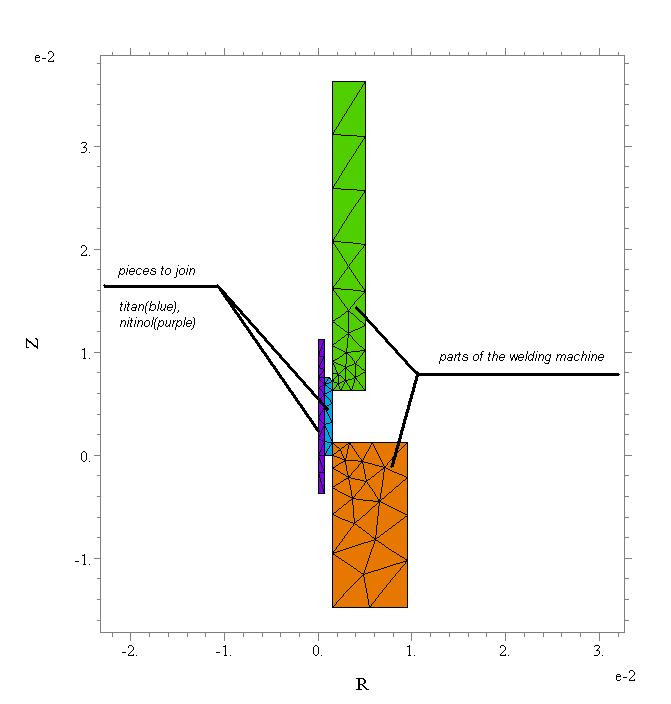| Author | Message | |||||
Zsolt Szlipcsevics (szlipcsevics) New member Username: szlipcsevics Post Number: 1 Registered: 12-2009 |
Dear Sir, I am studying mechanical engineering in Hungary and I am working on a welding problem using electrical heating and heat transport with the help of FlexPDE5.  It is working quite well, but now I am trying to simulate melting as well - I have studied the sample file 'melting', but the simulation crashes with a 'timestep has fallen...' error. I am relatively newbie - that's my first try with FlexPDE -, and I don't really know how I could fix the script. I post the script with the tables needed as attachments, I hope you can give me a helping hand with this problem. Thank you very much, Zsolt Szlipcsevics.
| |||||
Robert G. Nelson (rgnelson) Moderator Username: rgnelson Post Number: 1312 Registered: 06-2003 |
I assume you are using the student version of FlexPDE, and that this accounts for the restrictive node limit. 1. You have specified a melting transition range of only 1 degree, which is quite strict. This implies a very narrow melting front, which cannot be adequately modeled with the restricted mesh and causes strong excursions in the interpolated values and leads to disaster. You will have to falsify the transition width to create a "slush" range compatible with your meshing restrictions. I used a value of T0=50 with success. 2. Your tables do not cover the range of observed temperatures, so most of the problem is working outside the table range. You need to extend the table data to cover the active temperature range. 3. The UPULSE heating current is quite abrupt. You can improve the ability of FlexPDE to track the transitions if you put plot times at the pulse transition times. This forces timesteps to end on the plot times so that the transitions can be clearly seen. See attached.
| |||||
Zsolt Szlipcsevics (szlipcsevics) New member Username: szlipcsevics Post Number: 2 Registered: 12-2009 |
Hello, Thank you again for your help. I have consulted with one of my professors who has licensed version of FlexPDE5. The script worked fine without node limits as well. But there is one thing I'm interested in. The value of variable 'solid' should be in the interval (0,1) according to the defining equation, but in some points of the model it goes above or below, however The difference is not more than 5% of the interval. I was wondering whether it is just the error of finite element method or I have made a mistake when defining the equations. Maybe it is not important but I am curious what your opinion is. Can I make somehow the values be precisely in that certain interval? Regards, Zsolt Szlipcsevics. | |||||
Robert G. Nelson (rgnelson) Moderator Username: rgnelson Post Number: 1313 Registered: 06-2003 |
The finite element method as implemented in FlexPDE uses quadratic polynomials to approximate the solution over each mesh cell. If there is a sharp transition in the solution value and the mesh is not sufficiently dense to resolve the shape, there will be overshoots or undershoots in the interpolation polynomial. For example, fitting a parabola to the data points 1,0,0 will produce a curve that passes through the data points but goes significantly negative between the zeroes. In spite of these interpolation anomalies, fluxes and energies should be conserved in the model. |